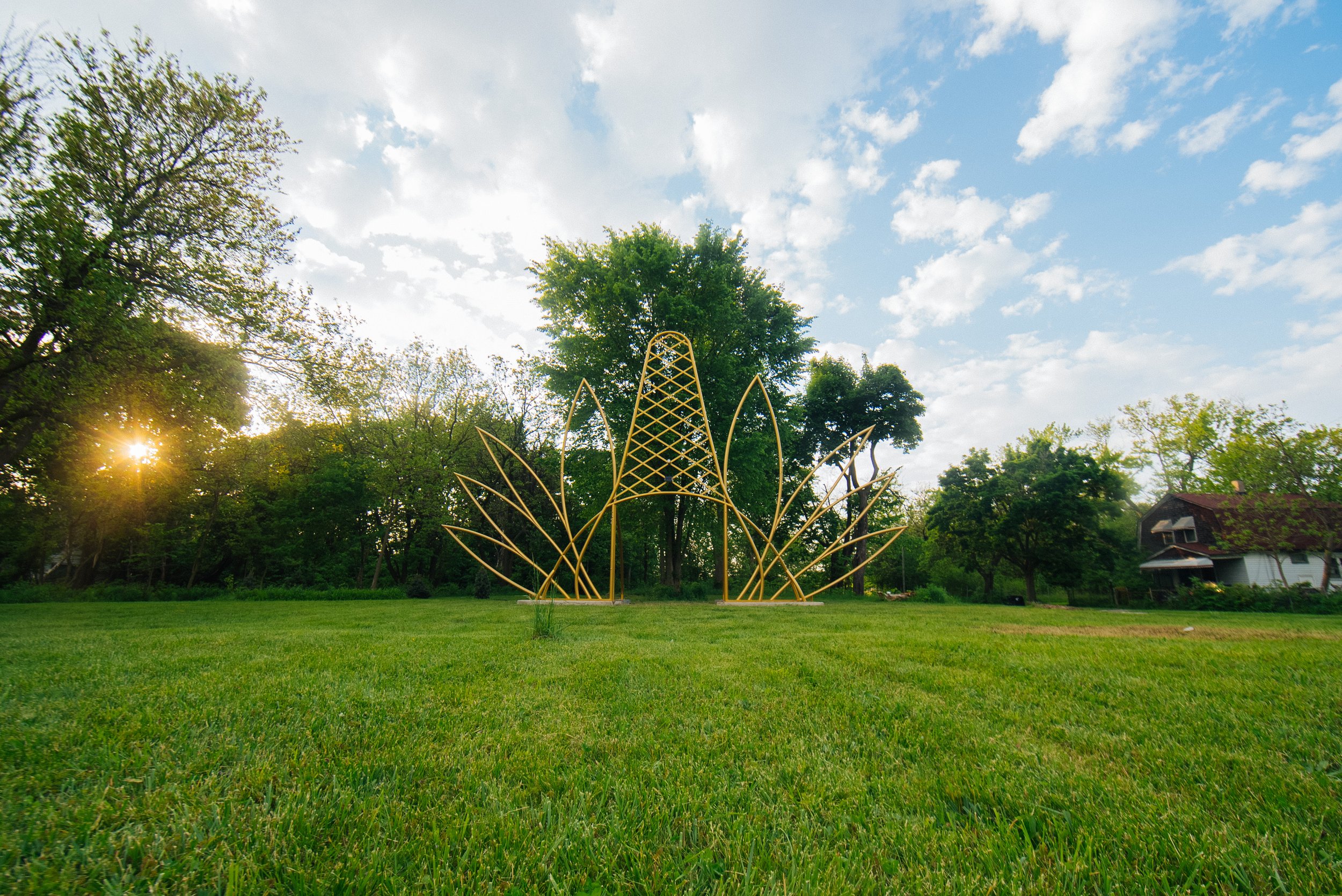Sidewalk Detroit introduces an ambitious public art initiative and artist residency that unites art, activism, and ecological transformation. The project emerges as a response to the alarming environmental challenges facing the East Canfield Village community. This project is in partnership with Canfield Consortium, a local organization situated on Detroit’s eastside. Through a collaborative endeavor, Sidewalk Detroit invites the expertise of Artist-in-Residence, Jordan Weber.
Jordan Weber, is a New York-based regenerative land sculptor and activist who works at the intersection of social justice and environmental apartheid through grassroots collaboration in industrial polluted neighborhoods such as St. Louis, Minneapolis, Detroit, Red Hook, NY, Boston, and Des Moines, Iowa. Weber will be coming to the eastside of Detroit in the Fall of 2023 with an installation work that welcomes resistance, education, healing, and ancestral veneration with the transformation of greenspace in East Canfield Village.
The start of this initiative is rooted in a historical context of adversity, particularly the aftermath of Detroit's housing crisis between 2008 and 2015. The unjust foreclosure of over 200,000 homes disproportionately affected the Black middle-upper class, resulting in vast swaths of vacant properties and neighborhood decay. The expansion of facilities like the Stellantis-Mack Assembly plant is negatively impacting the community's health.
Environmental racism is prevalent in not only Detroit but in most Black and Brown majority-occupied cities across the nation. Due to its proximity to the Stellantis-Mack Assembly plant, the vibrant, lush community of East Canfield Village must wrestle with particular matter (PM) pollution from its 8th air quality violation. Harm from the assembly plant has ranged from displacement and increased asthma rates to alarming contributions to the area’s air pollution.
Central to Weber's installation is an intersectional focus on social justice and the ecological consequences of environmental apartheid. The installation will incorporate an air quality monitor that will provide real-time data on air toxins emanating from Stellantis. Beyond its ecological role, this transformed space assumes the role of an air detoxification zone; a sanctuary for healing practices, and an outdoor classroom dedicated to environmental justice education.
Installation of architecturally constructed crowns honoring Queen Idia of Benin and Queen Ranavalona III of Madagascar for their fight against colonialism will serve as an entryway while symbolizing the counter-ecological violence happening in East Canfield Village.
Canfield Consortium, under the guidance of committed residents and founders, Kim and Rhonda Theus, are transforming East Canfield Village into a place of beauty, lush with green space, flower gardens, and community programming, while nurturing the embrace of hope and mental stability. This project addresses environmental racism, arming residents with insights into air quality and sustainable tools to reclaim and uplift their community, thereby weaving art, activism, and ecological revival into a powerful narrative of transformation. Weber’s installation extends an invitation to reimagine not only a forest but an entire future – one where art becomes a catalyst for transformation, landscapes breathe anew, and the legacy of a community grows stronger.
Community Partners: Barack Obama Academy, Canfield Consortium, East Warren Tool Library, Ecology Center, Greening of Detroit, Green Door Initiative, Grow Detroit Young Talent, Keep Growing Detroit, Tree Troit, and the residents of East Canfield Village.
Fabrication: Ben Wolf & Juan Martinez
Funders: Erb Foundation, Hudson-Webber Foundation, The Knight Foundation, The Kresge Foundation, VIA Art Fund
Media Coverage:
Sidewalk Detroit Artist Video: Sidewalk Detroit
Detroit Free Press: Remediation Forest coming to East Canfield Art Park in Detroit
Detroit Metro Times: Sidewalk Detroit is planting a ‘remediation forest’ to mitigate air pollution from Stellantis plant










